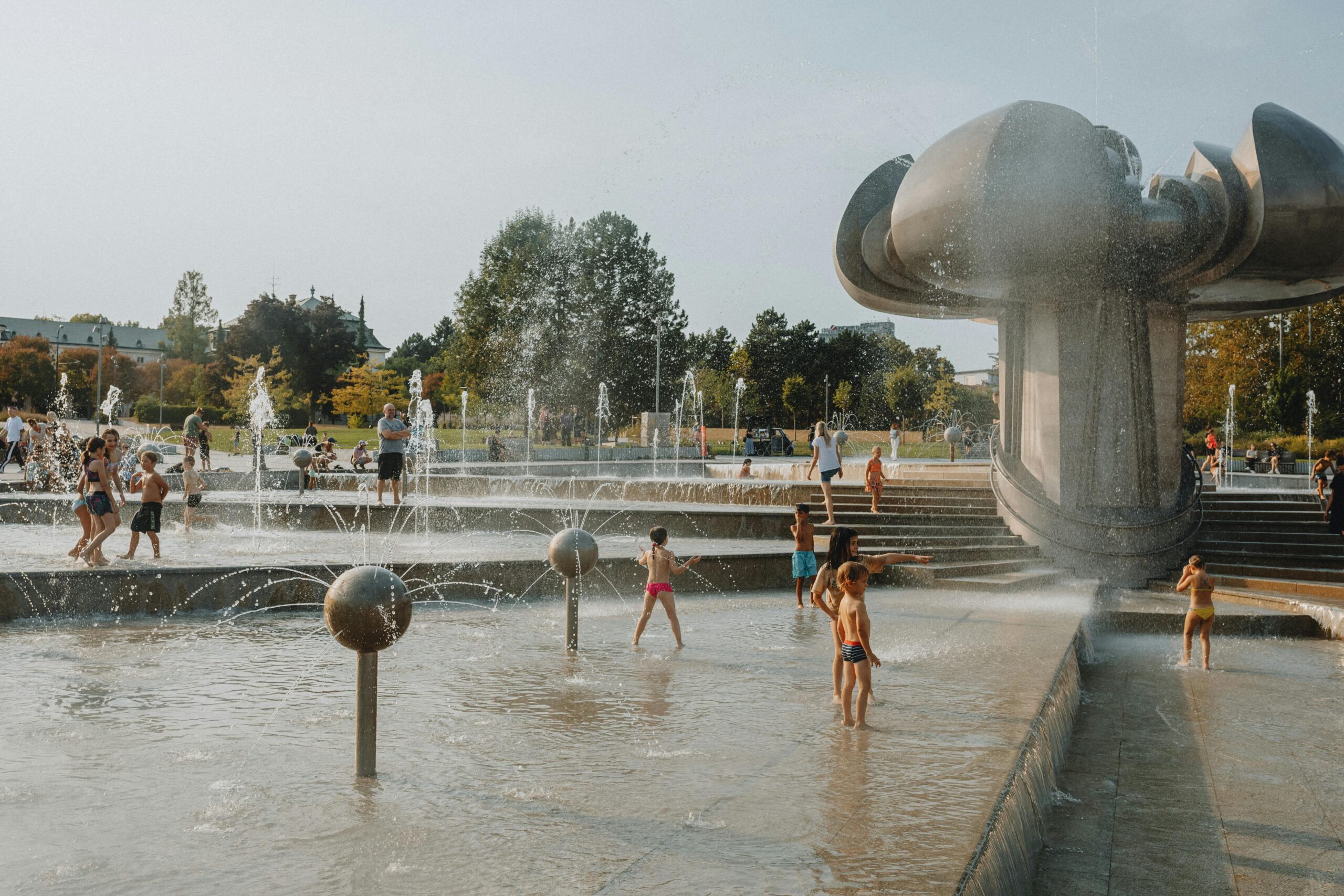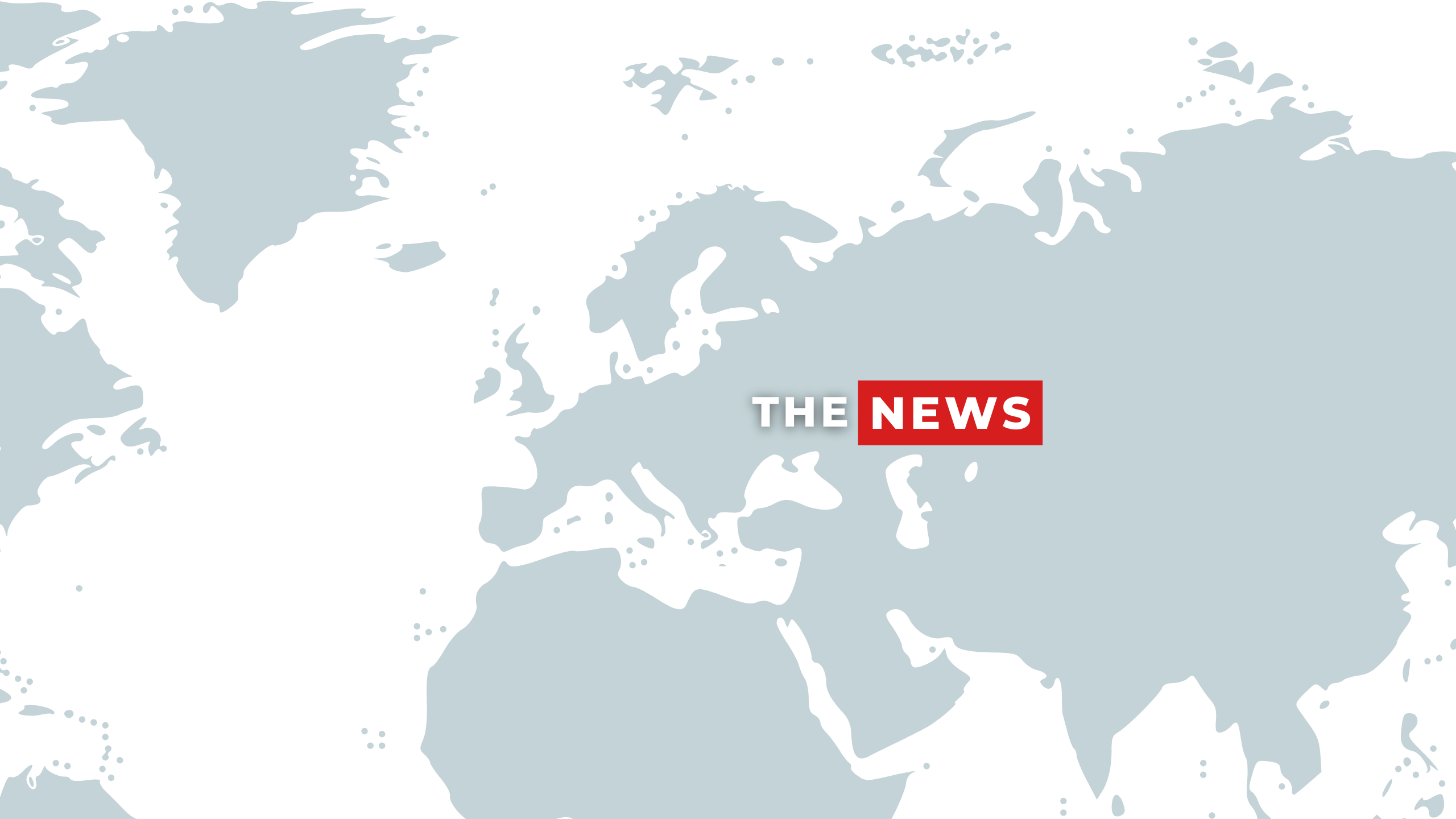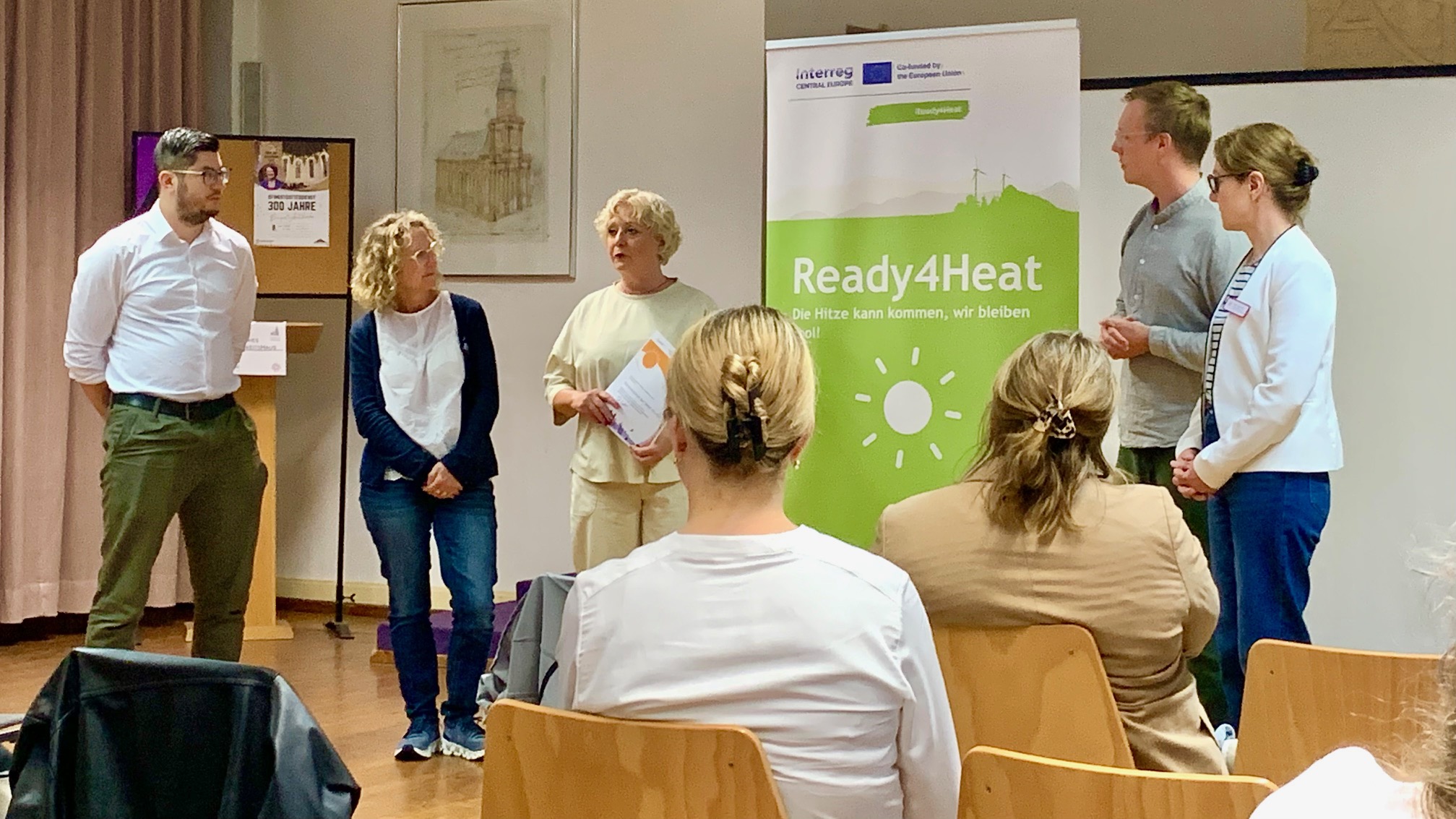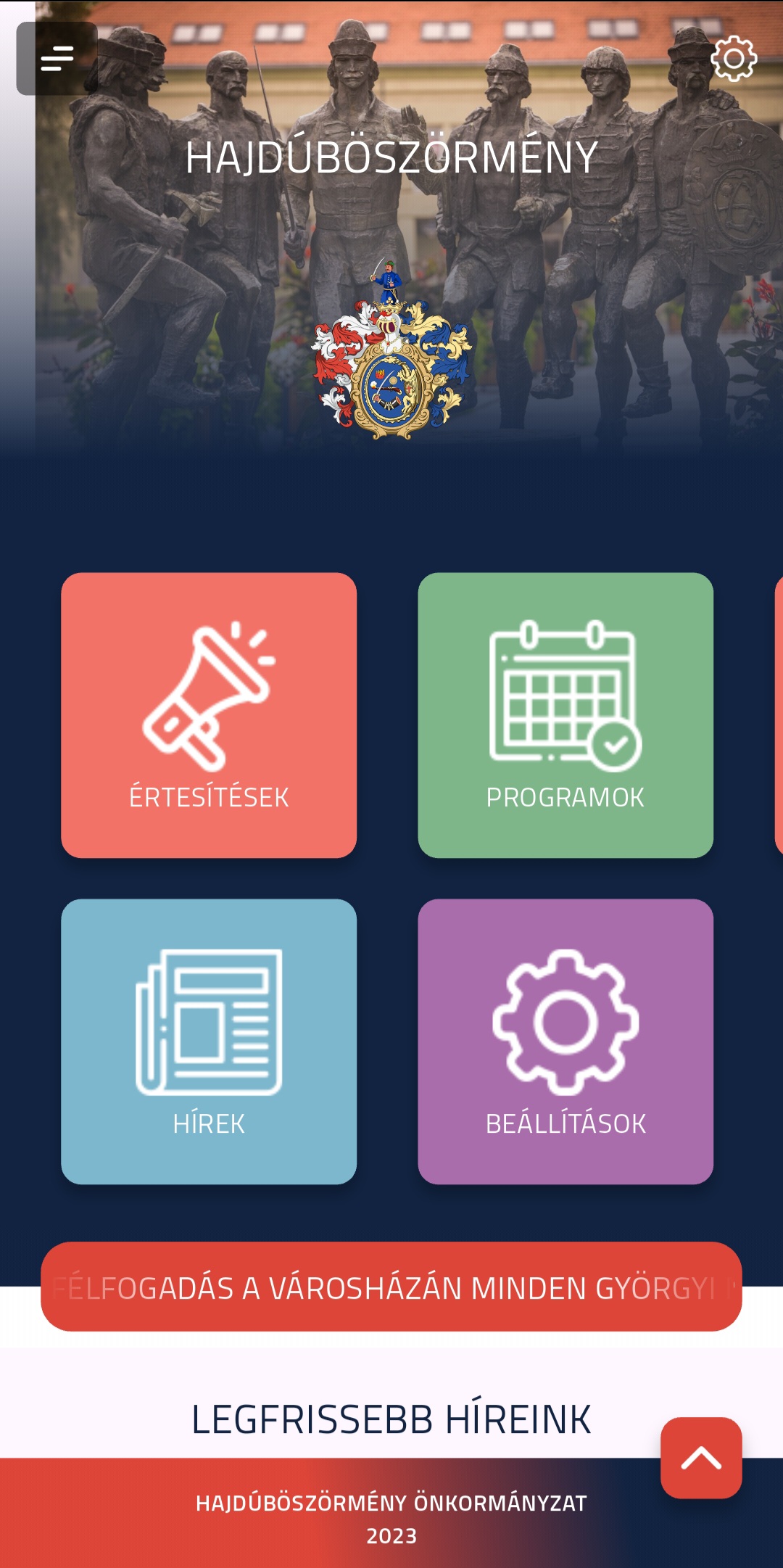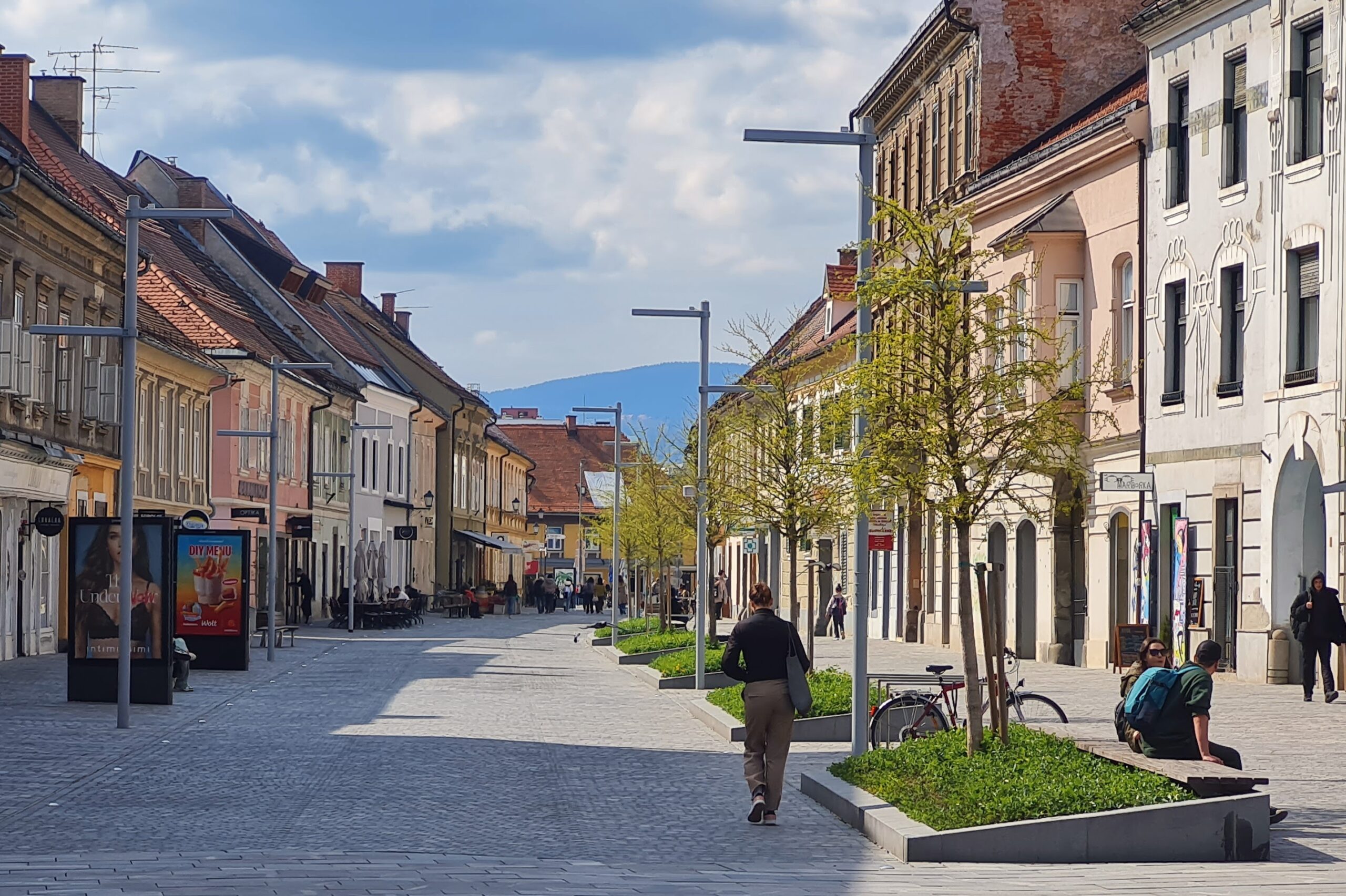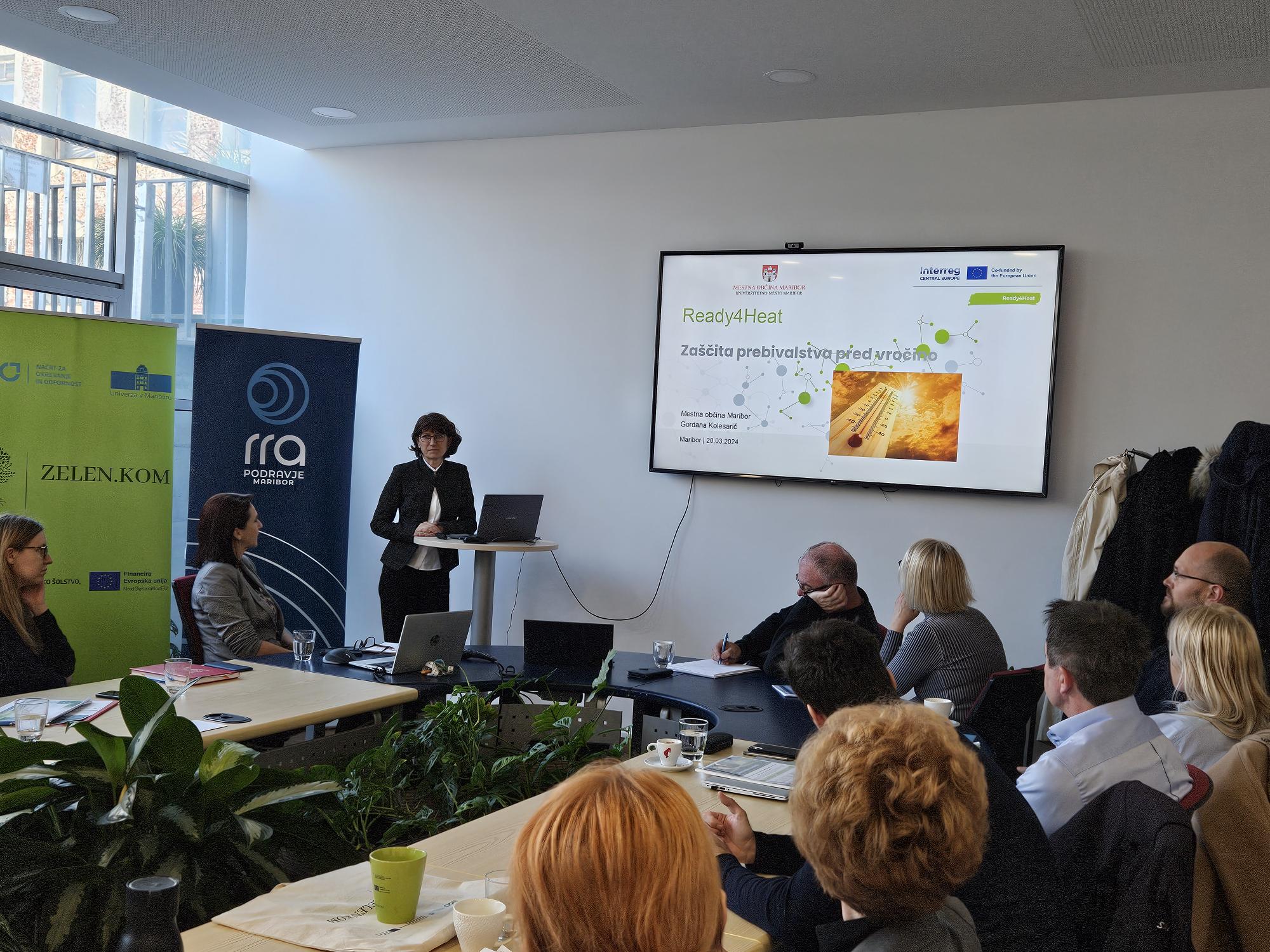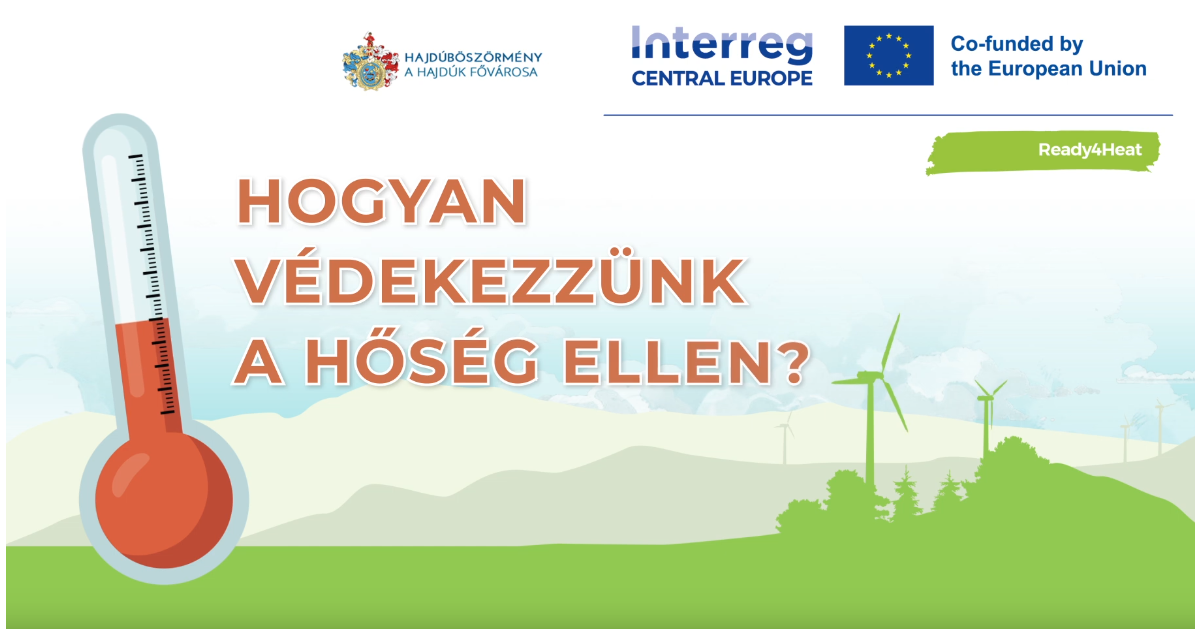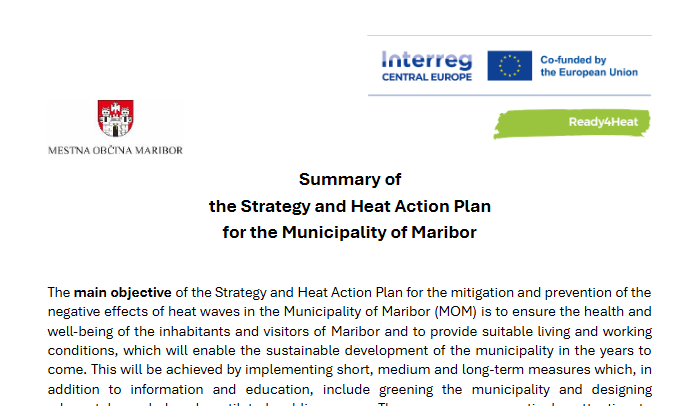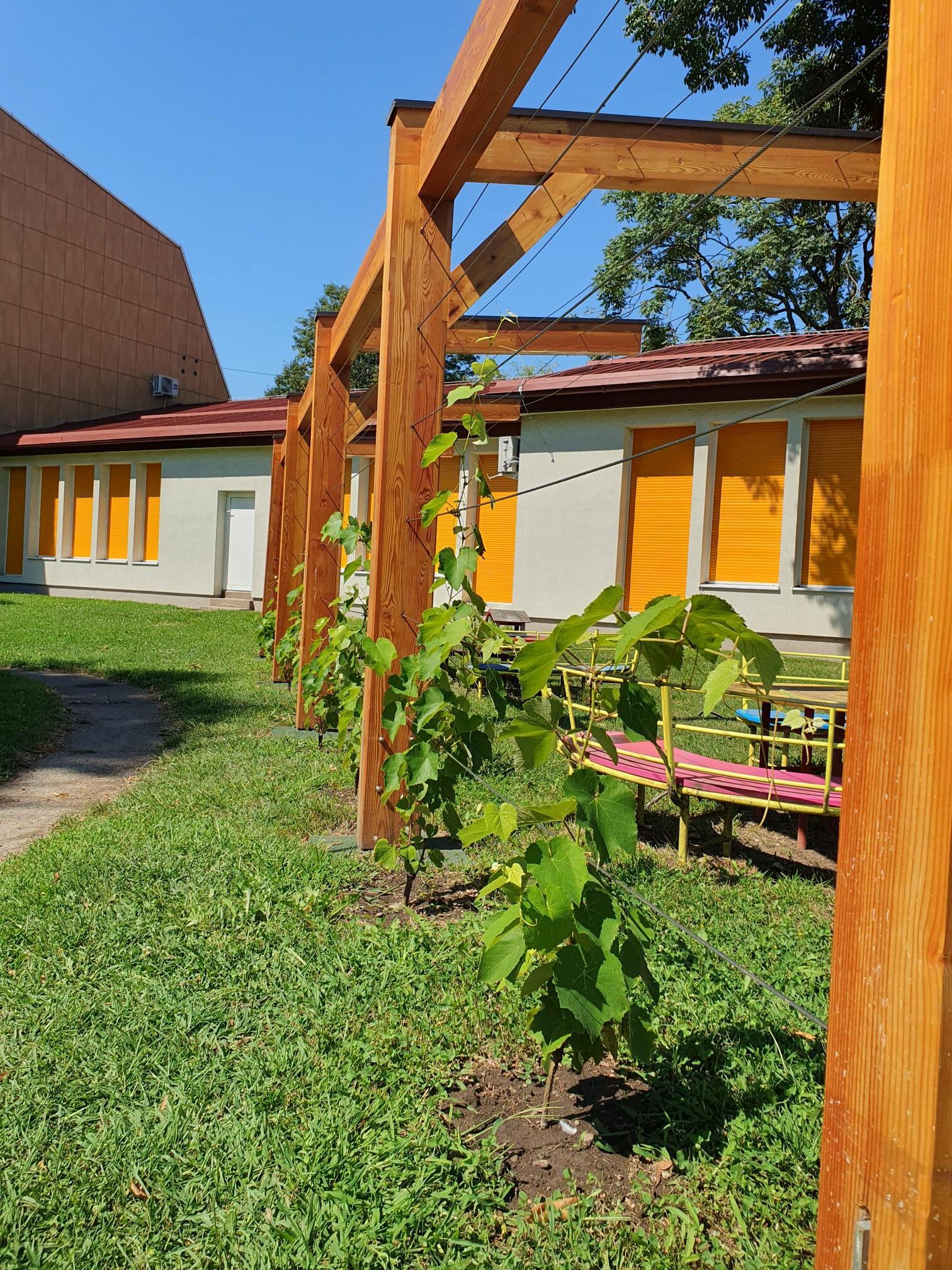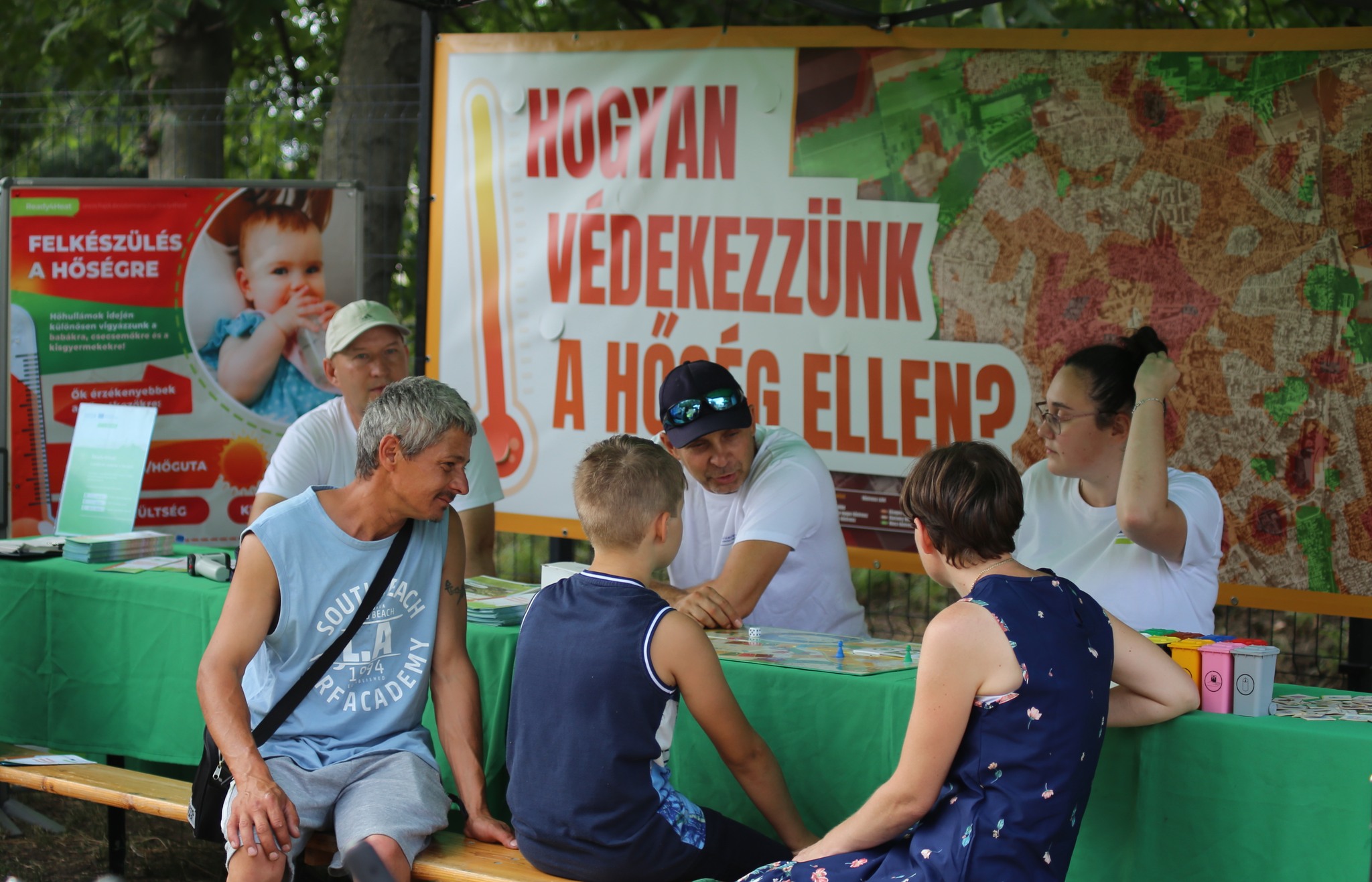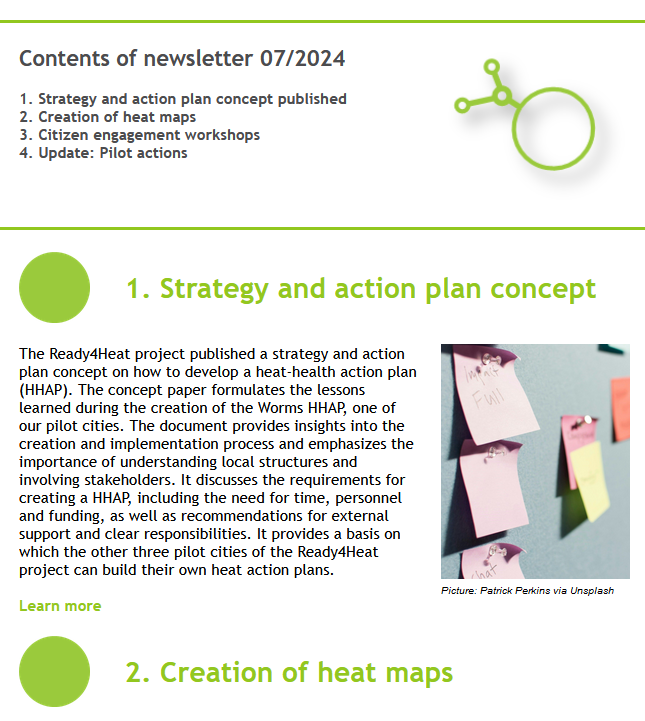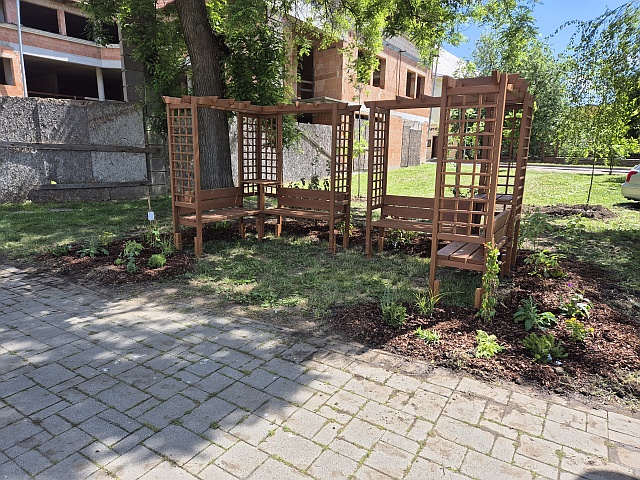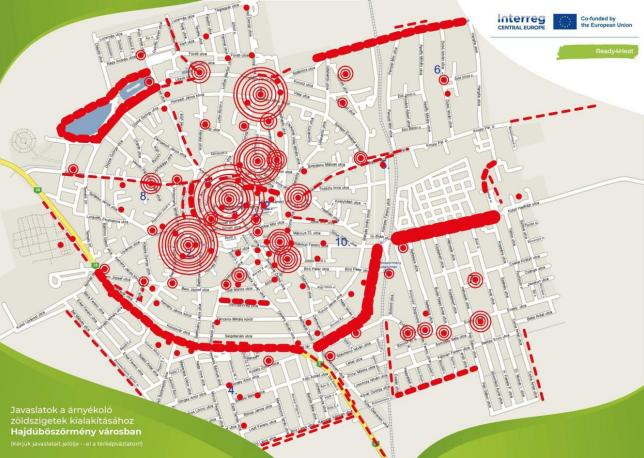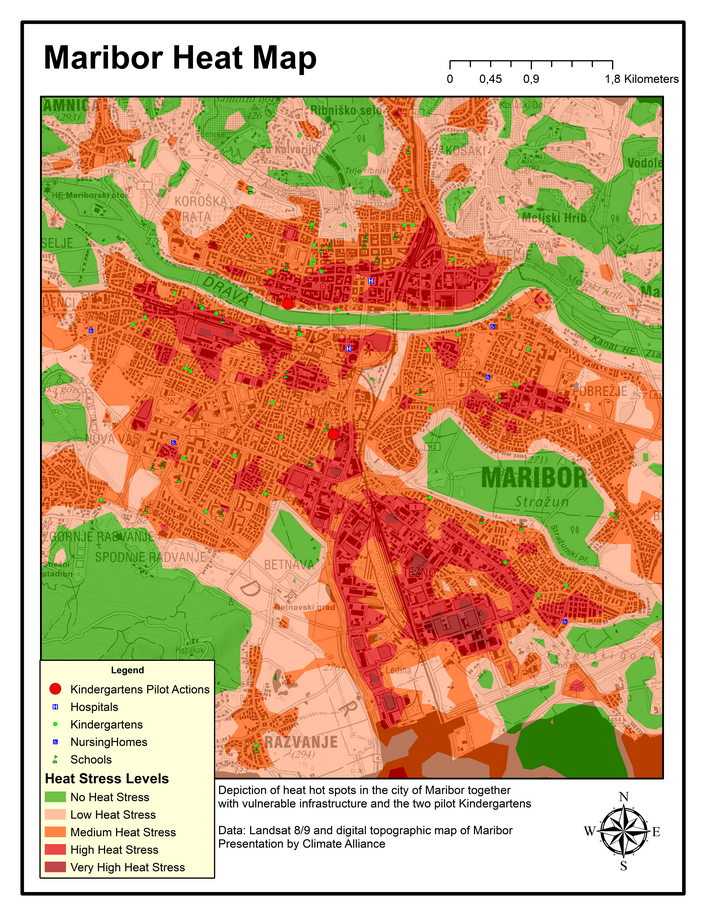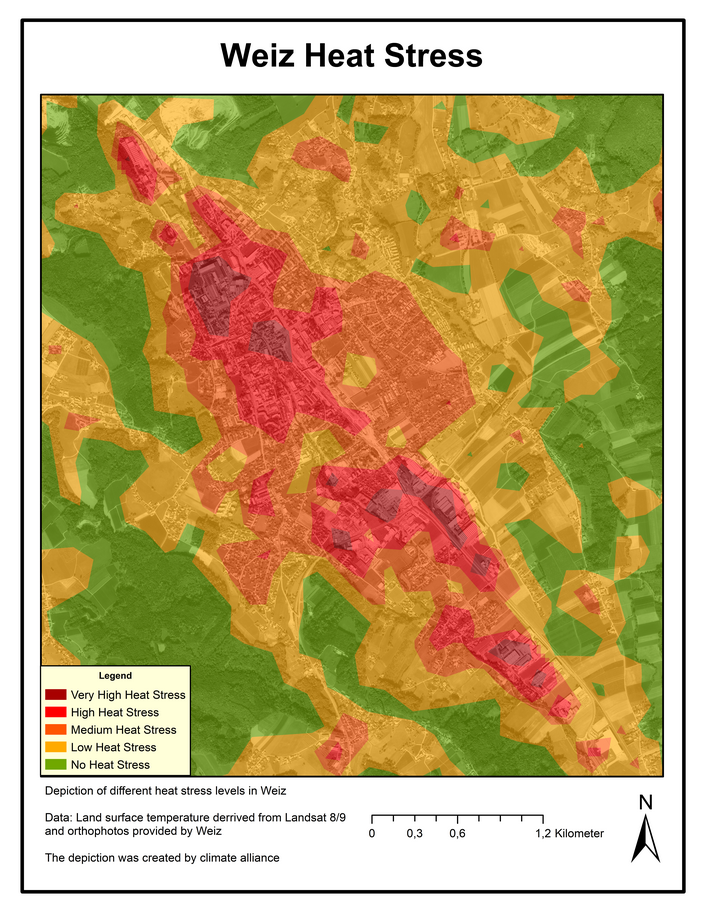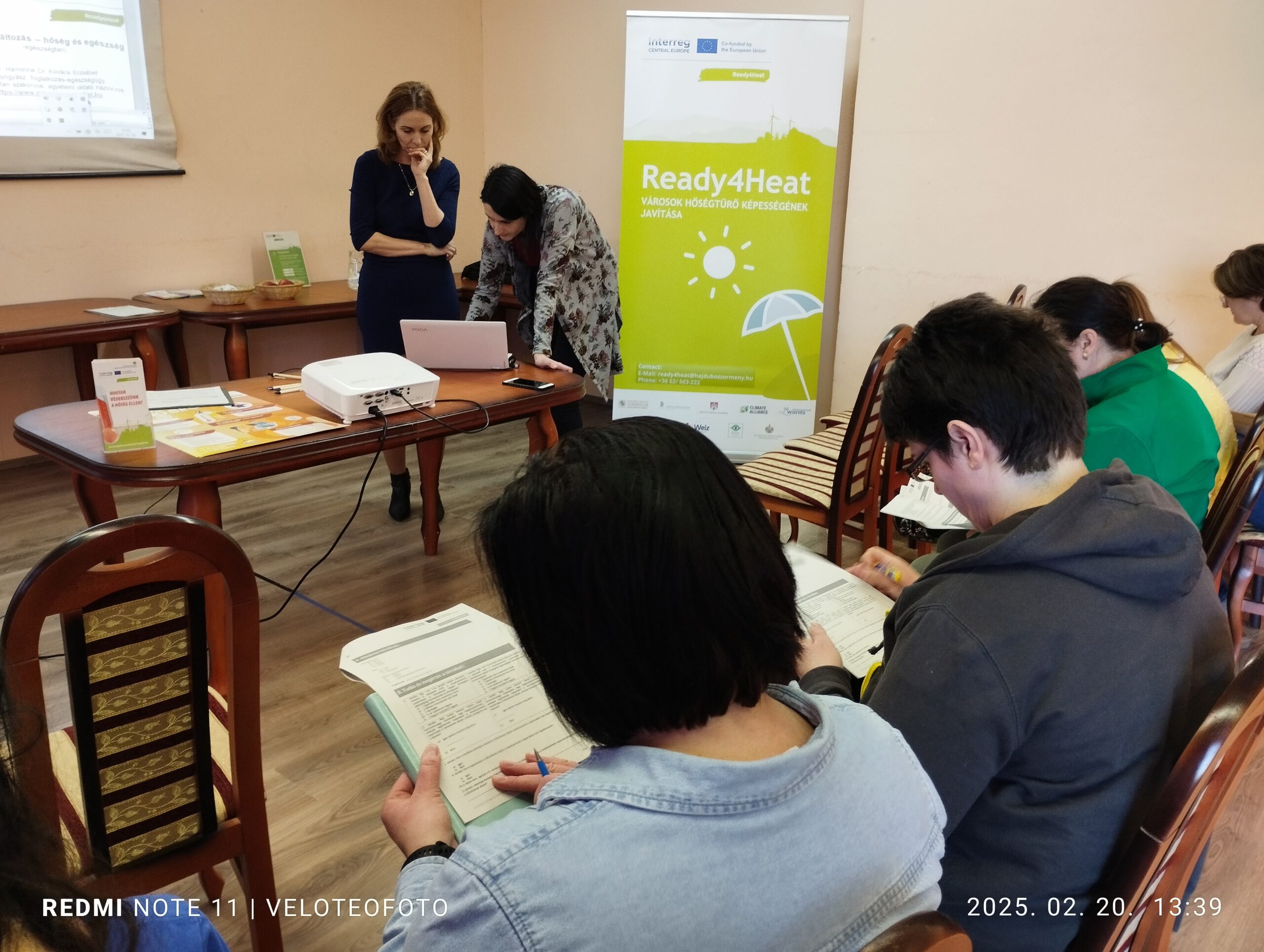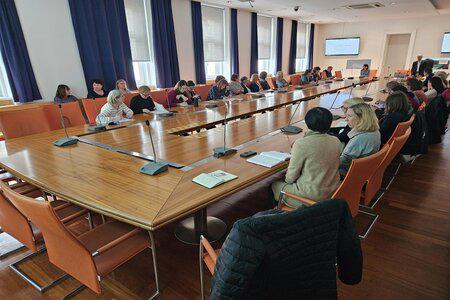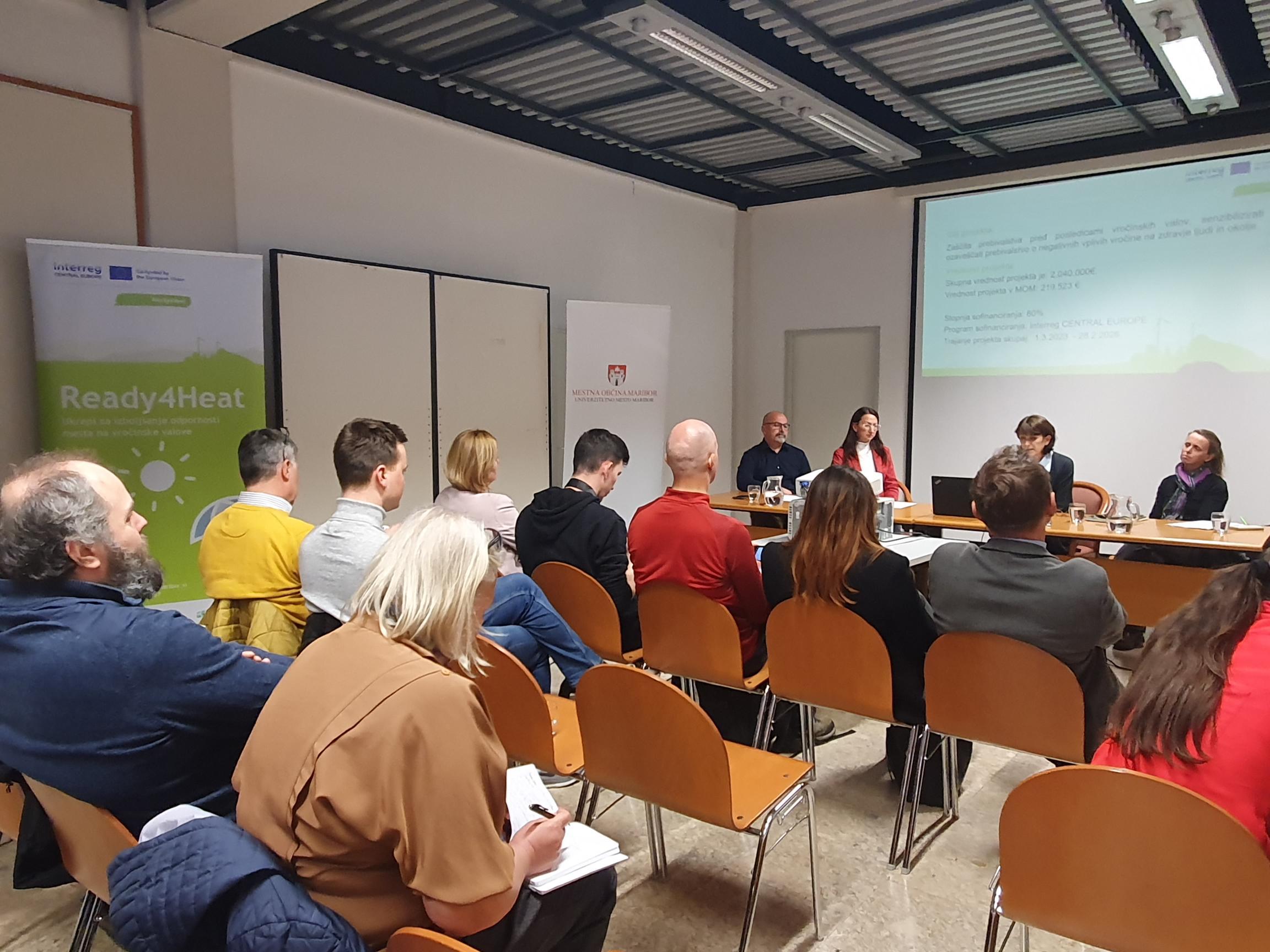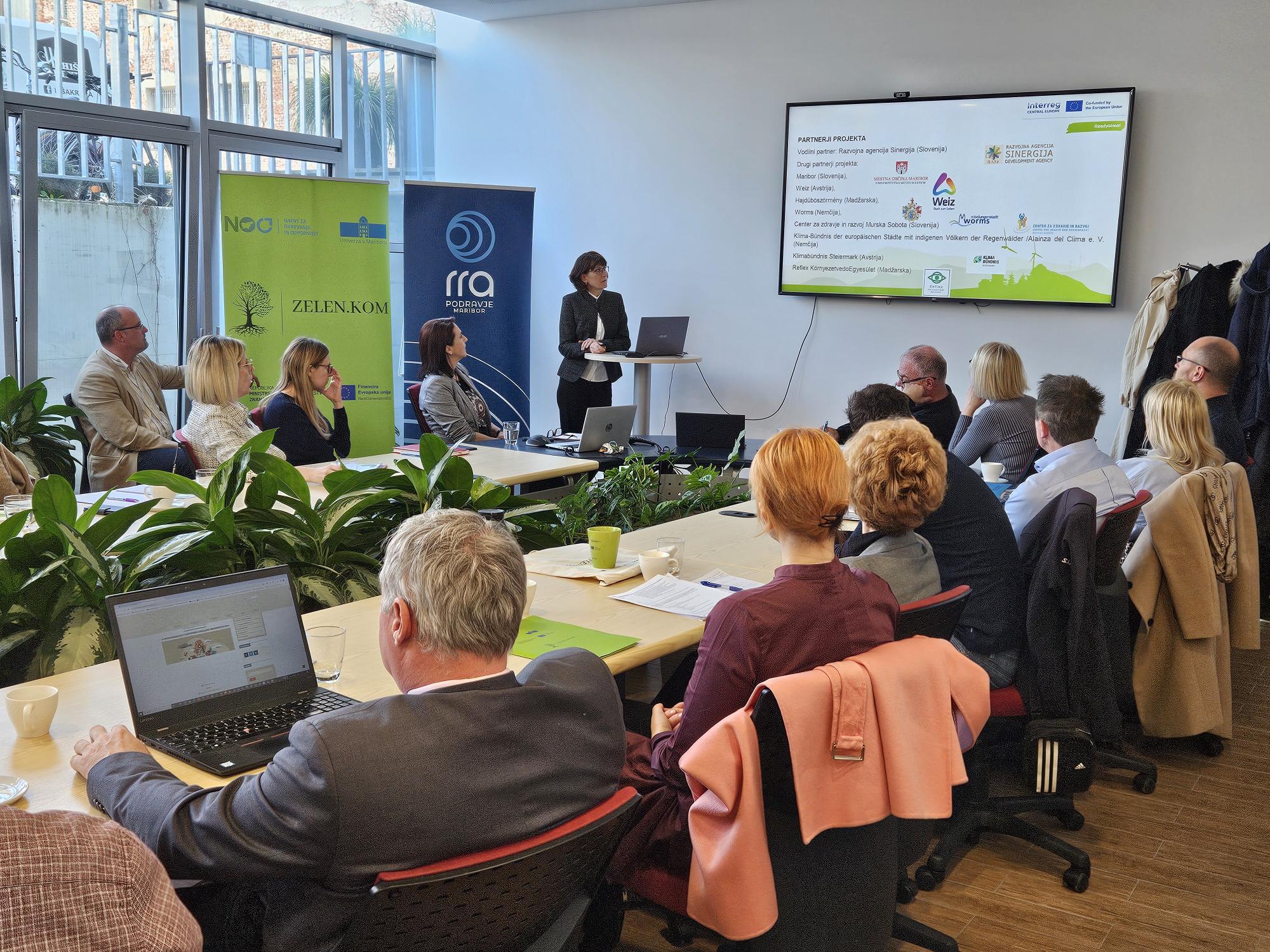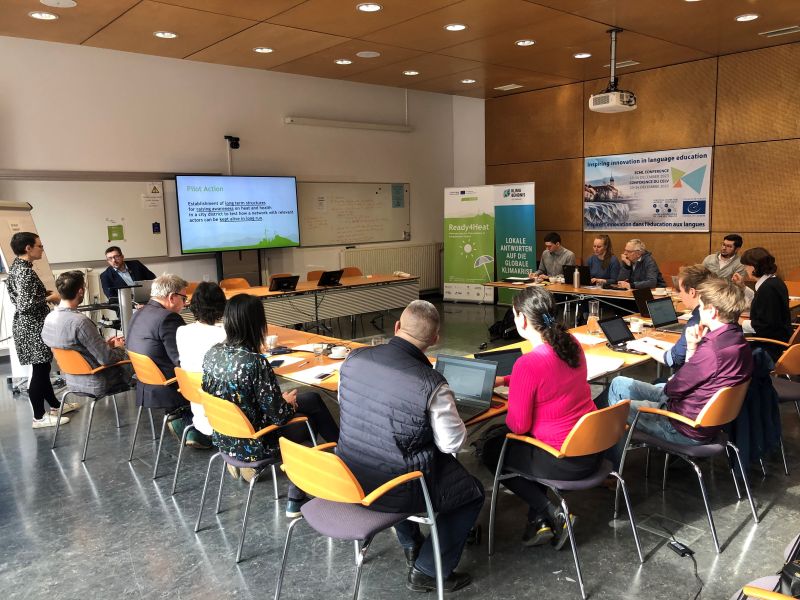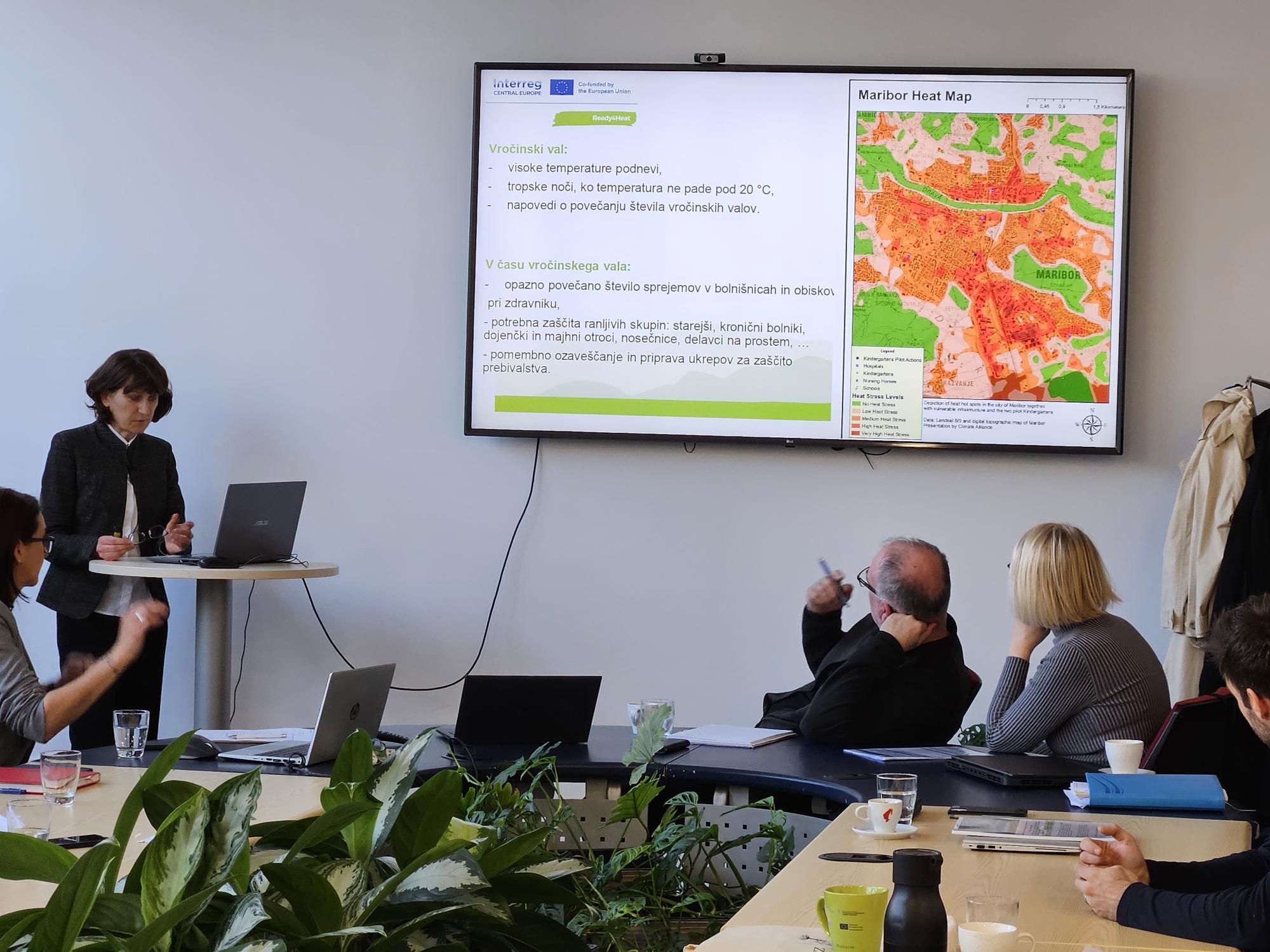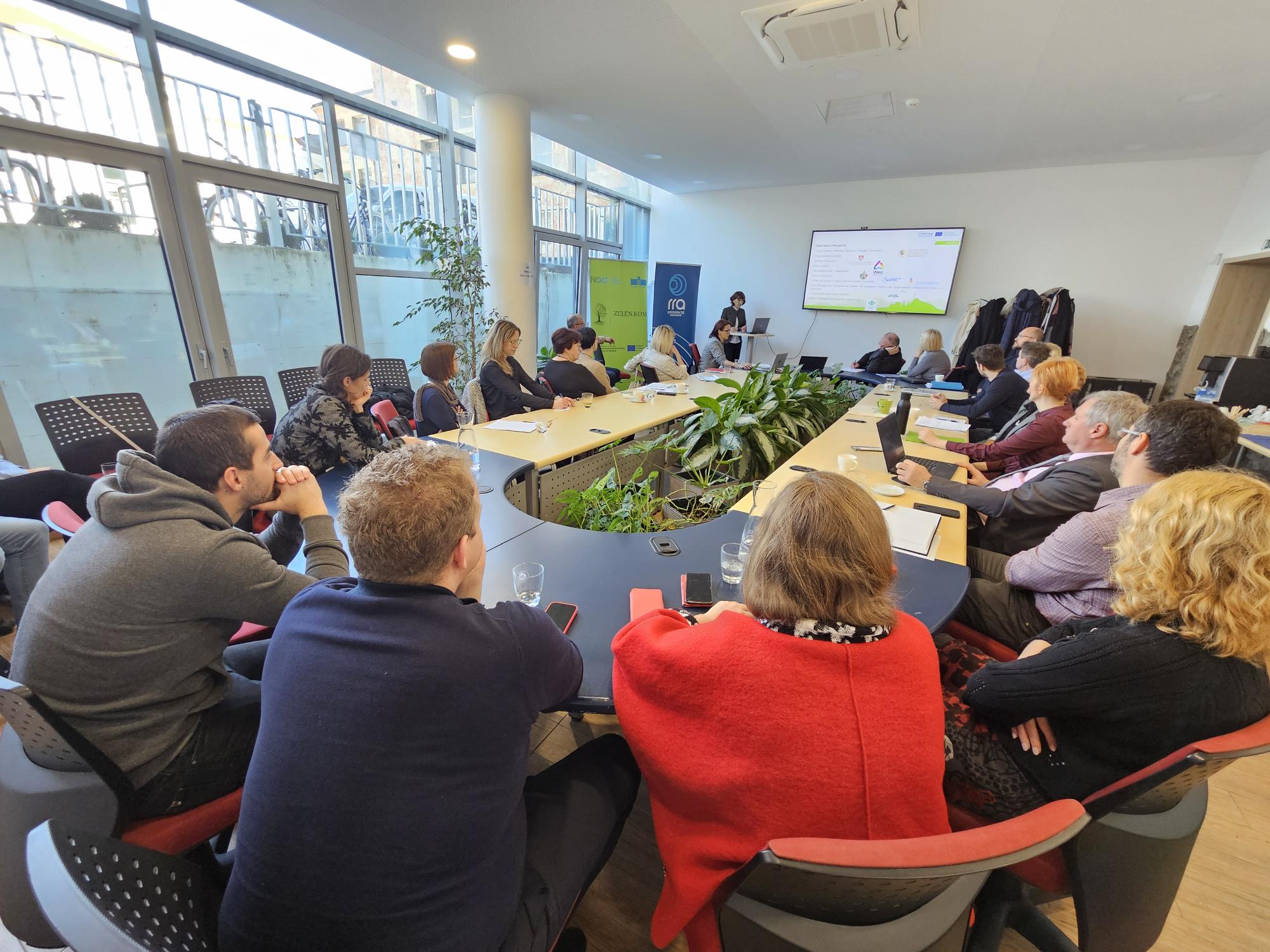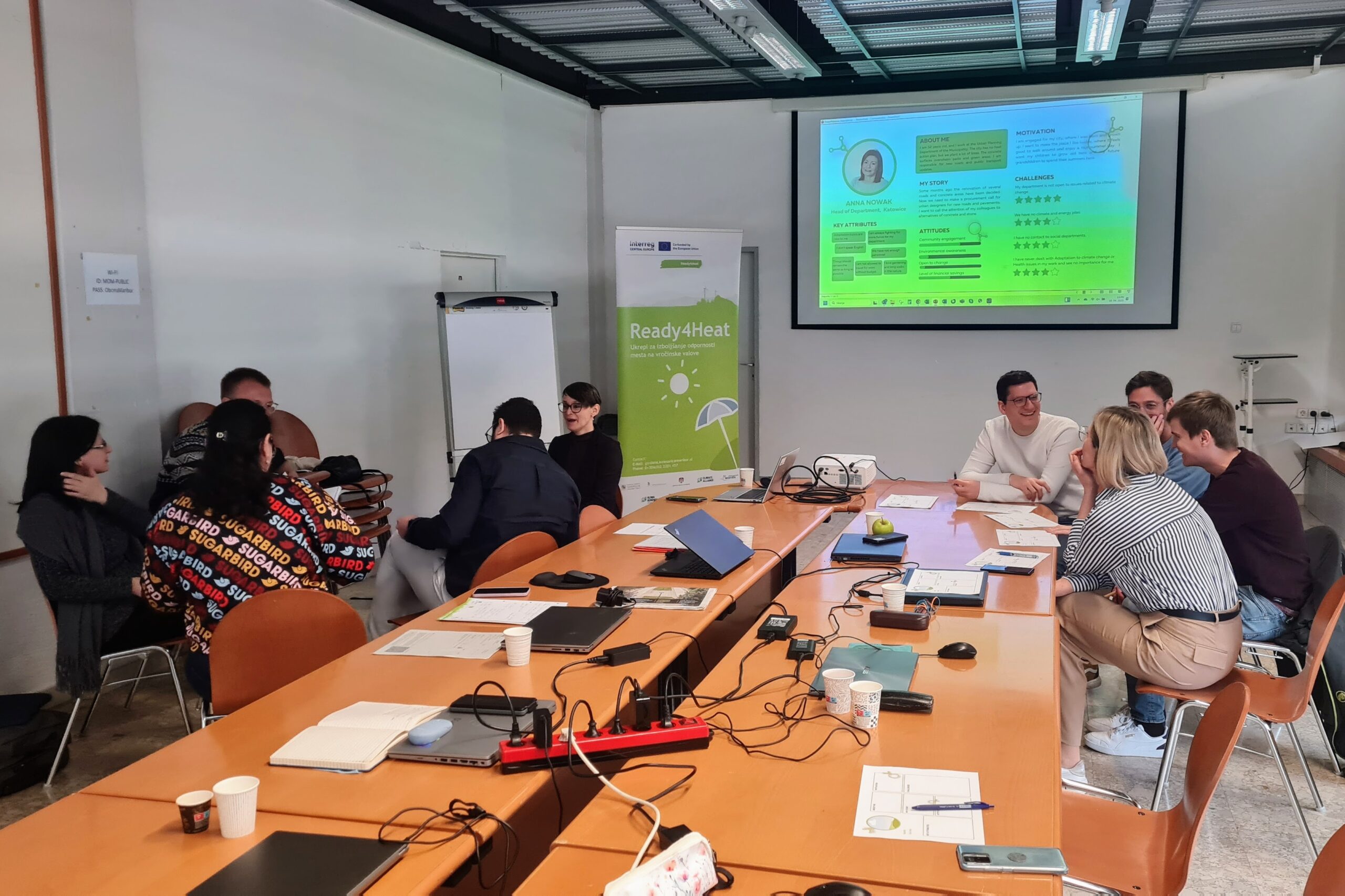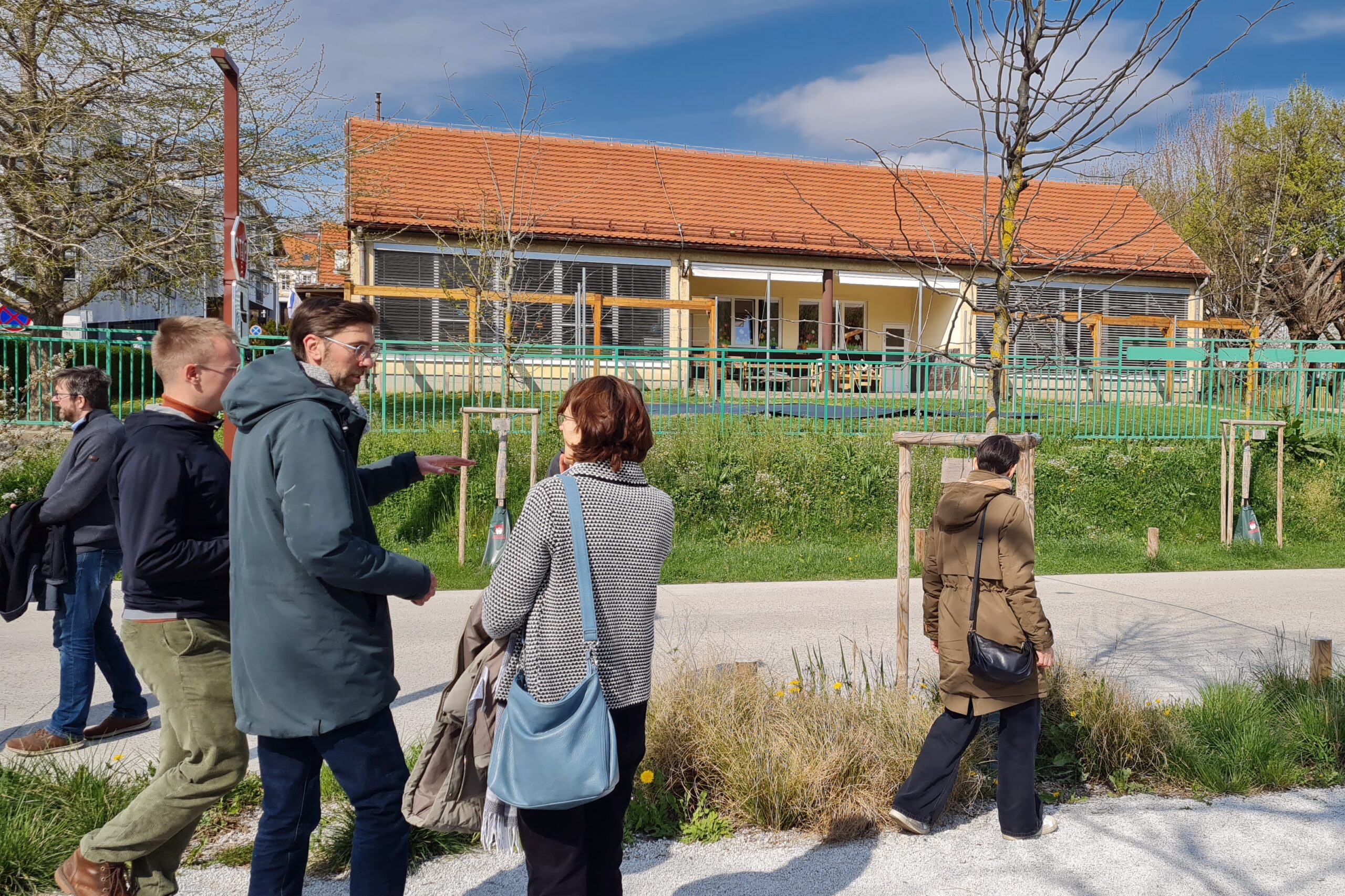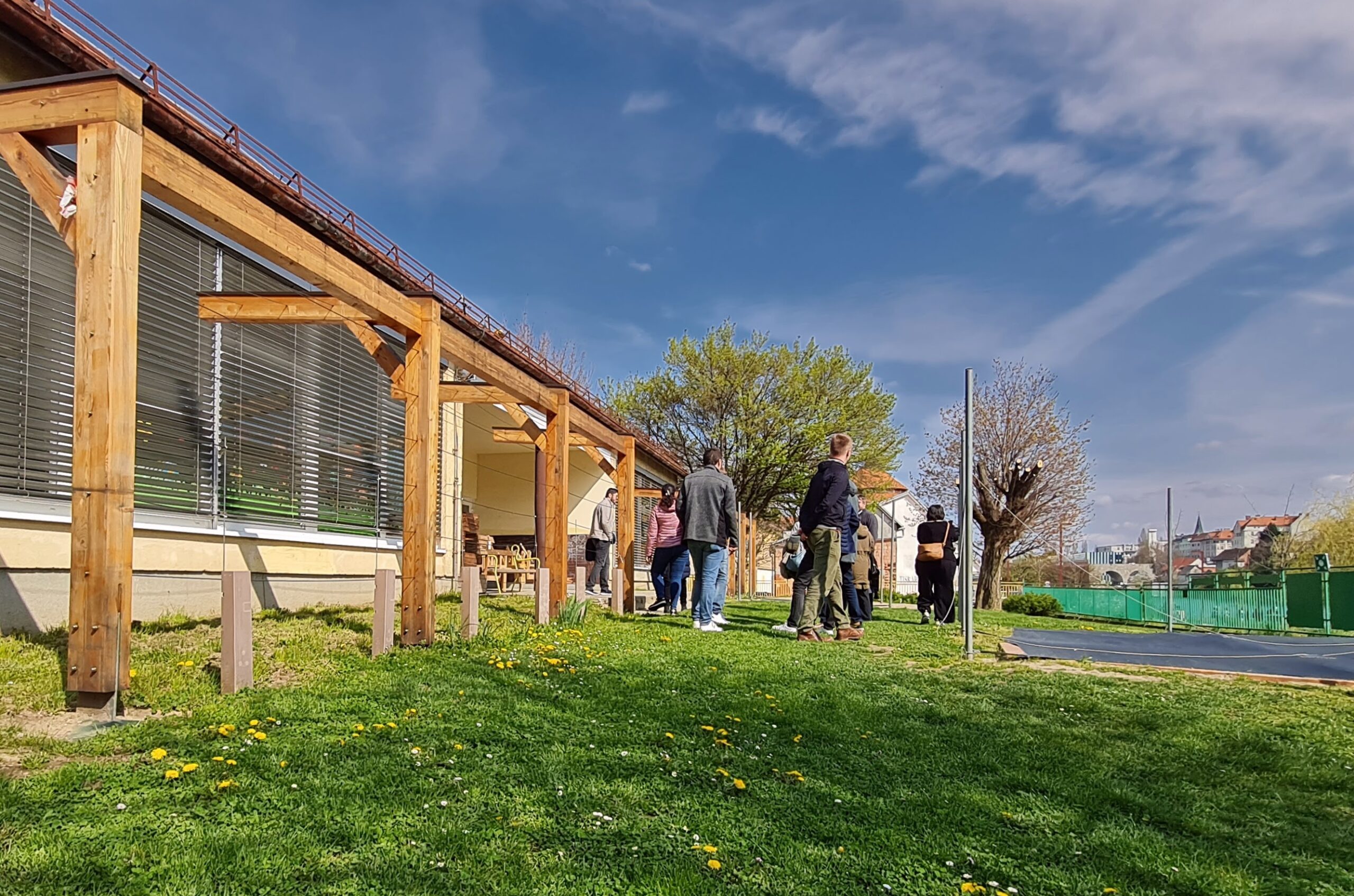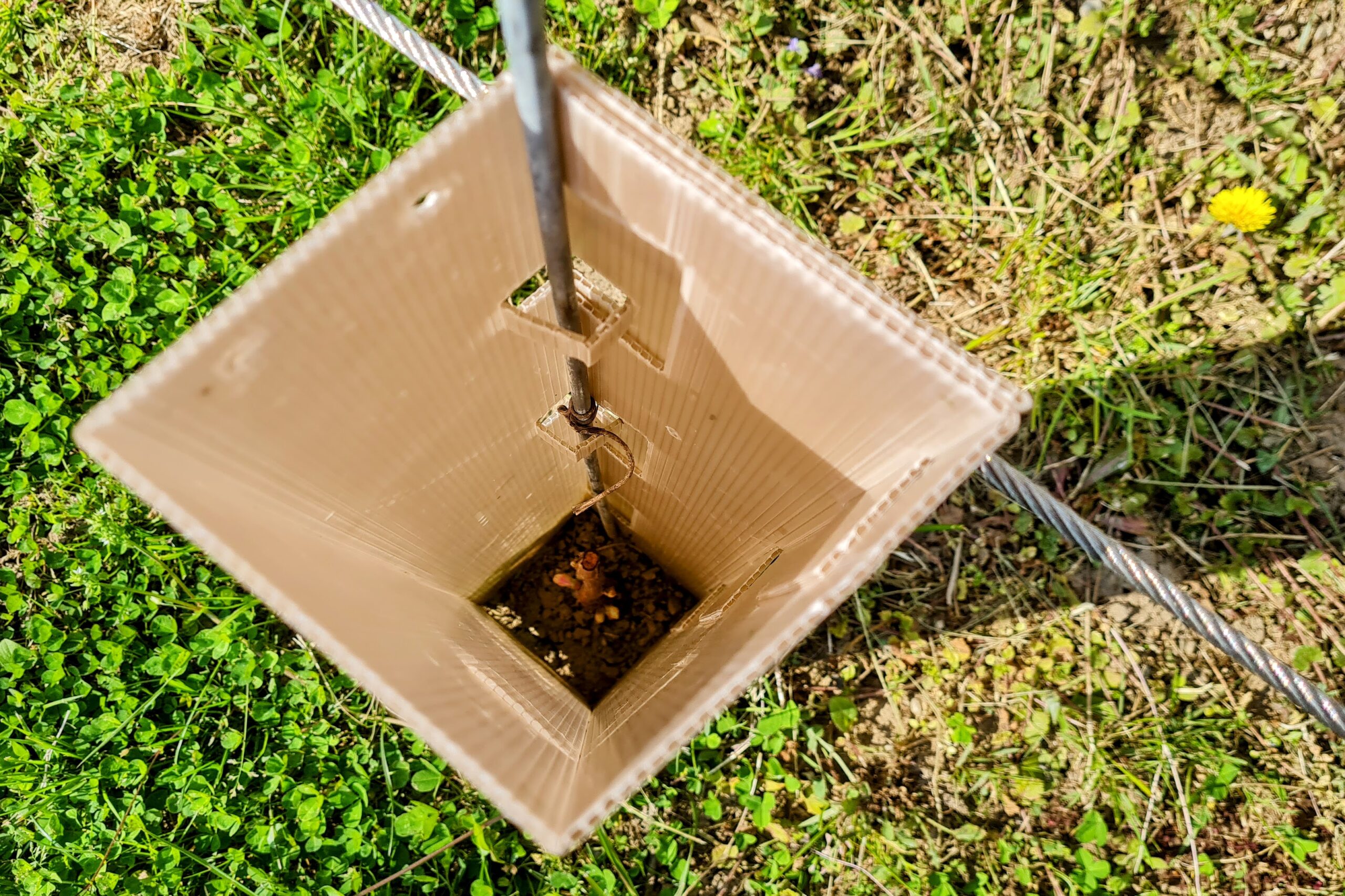Project overview
Development of municipal strategies and action plans to improve heat resilience in cities
Global warming comes with more frequent and intense heat waves. Cities in central Europe need to adapt but many still lack efficient strategies and action plans to protect their citizens from heat. The Ready4Heat project helps them to introduce tested short-, medium- and long-term measures with a focus on the most urgent issue: sudden heat waves. The project makes proven and tested measures such as heat warning systems accessible to all cities and helps them to adopt these quickly.
-
2,04m €
-
Project Budget
-
80%
-
of the Budget is funded by ERDF
-
4
-
Countries
-
6
-
Regions
-
9
-
Partners
-
4
-
Pilots
Duration
Start date
End date
Project progress
Project partnership
Project partners

Lead partner
Development agency Sinergija
Project partner
Adaptation to climate change
60486 Frankfurt am Main
Climate protection and adaptation to climate change
Location development Weiz
Roadmap
The challenge: Heat waves in urban areas

Global warming comes with more frequent and intense heat waves. Cities in central Europe need to adapt but many still lack efficient strategies and action plans to protect their citizens from heat. The Ready4Heat project aims to support four cities in developing a local heat-health action plan and to implement pilot actions.
Creating a strategic action plan

This strategy paper formulates the lessons learned during the creation of the heat action plan in Worms, one of our pilot cities. The document provides insights into the creation and implementation process and emphasizes the importance of understanding local structures and involving stakeholders. It discusses the requirements for creating a Heat Action Plan, including the need for time, personnel and funding, as well as recommendations for external support and clear responsibilities. It provides a distinct basis on which the other three pilot cities of Weiz, Maribor and Hajdúböszörmény can build their own heat action plans.
Running train the trainers workshops

In our Train-the-Trainers workshops, we aimed to disseminate valuable insights and expertise on developing effective Heat Action Plans, drawing from our successful experience in Worms. These workshops served as a platform to transfer knowledge to representatives from three other pilot cities. By sharing the intricacies of our heat action planning process, we aimed to empower these cities to create their own comprehensive Heat Action Plans tailored to their unique circumstances. The collaborative initiative reflects our commitment to fostering resilience in the face of rising temperatures and ensuring that cities globally are equipped to tackle the challenges posed by extreme heat through strategic planning and coordinated efforts.
Compiling heat maps for each city

In order to develop the most efficient heat adaptation strategy possible, the pilot cities need to know where the heat spots are in their respective cities. To this end, we used satellite images to analyze the heat levels in the different parts of the city and assess where measures are particularly necessary and where vulnerable infrastructure and groups are located in the heat spots. In addition, a climate ensemble was created to illustrate the coming changes and show how climate change can influence important indicators such as heat days or tropical nights in the coming decades. The Results can be found under "Outputs"!
Stakeholder participation in the pilot cities
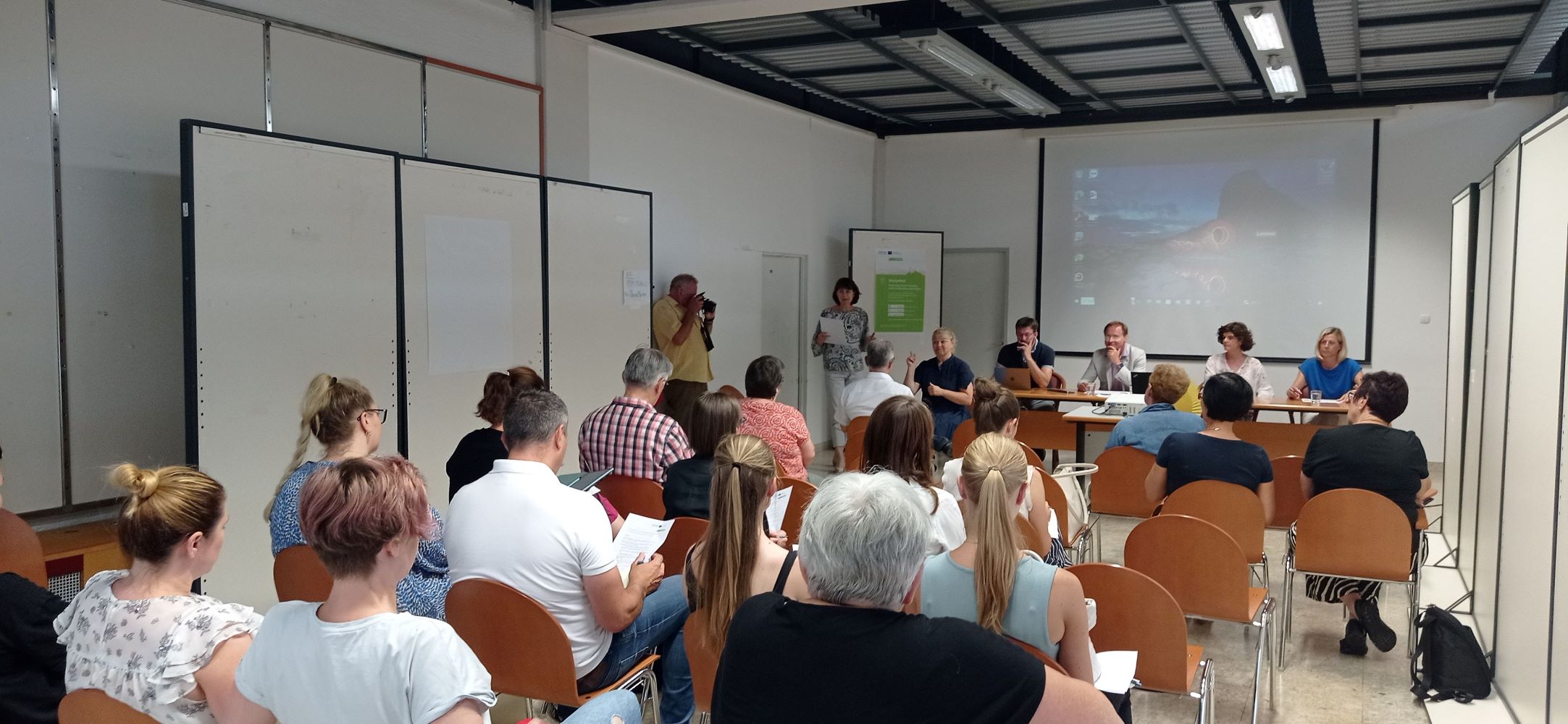
Citizen engagement in the context of heat adaptation is of paramount importance due to the multifaceted and far-reaching consequences of extreme heat. For this reason, the Ready4Heat pilot cities Hajdúböszörmény, Maribor and Weiz carried out citizen engagement processes. As a first step, kick-off events were held in summer 2023. This was followed by stakeholder and citizen engagement workshops in late 2023 and early 2024.
Implementing pilot actions
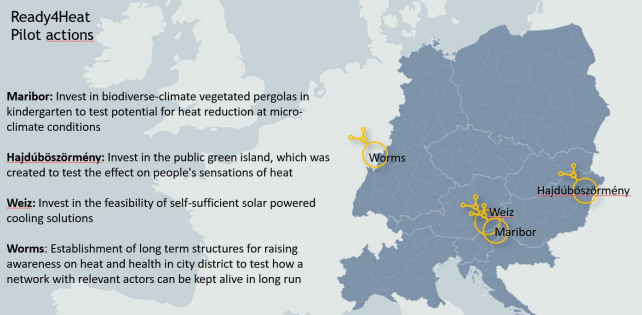
To address heat and health issues, the cities of Hajdúböszörmény, Maribor, Weiz and Worms are working on pilot actions in order to try out suitable and transferable measures helping to combat heat. These measures are documented in pilot actions concepts.
Drafting heat-health actions plans

Based on the citizen engagement processes and the strategy and action plan, the pilot cities Hajdúböszörmény, Maribor and Weiz are developing local heat-health action plans, including a warning system, a steering group and a catalogue of measures.
Advanced trainings

Online trainings for multipliers (working with vulnerable groups) will be organised in each pilot city, to enable them to implement health-related protection measures.
Transferring the results

In a policy brief and transnational webinars, the project experiences will be shared and recommendations for measures will be given.
News
Events
Pilot actions
Outputs

Municipal heat strategies and action plans for the mitigation of heat waves
Local Heat Strategies and Action Plans
Three local heat strategies and action plans for the cities of Hajdúböszörmény, Maribor, and Weiz have been developed. Each document covers a strategic and structural part, as well as an action plan with concrete measures to improve the situation caused by heat waves.
The development of the plans was based on a stakeholder participation process, as well as discussions within the project's co-working groups. A heat and climate analysis of the pilot cities' areas, along with a strategy and action plan concept, supported the output development. This concept outlines the development and implementation process of a heat-health action plan (HHAP) and reflects the experiences made by the city of Worms.
The strategy and action plan concept is useful for all municipalities embarking on the journey of designing their own HHAPs as part of their climate adaptation strategies. The blueprint for an HHAP is based on a German project where the city of Worms designed its plan in cooperation with the University of Applied Sciences Fulda, the University Hospital Munich (LMU), Climate Alliance, and the Rhineland-Palatinate Competence Centre for Climate Change Impacts. This guideline describes the key steps Worms has taken, reflects on the process, and presents valuable lessons learned — providing a solid foundation for municipalities looking to strengthen their resilience against heat waves.
- Maribor: Strategy and action plan
- Maribor: Strategy and action plan (English summary)
- Weiz: Strategy and action plan
- Weiz: Strategy and action plan (English summary)
- Heat and climate analysis of the pilot cities areas
- Concept for strategy and action plan development
- Hajduboszormeny: Strategy and action plan (English summary)
- Hajduboszormeny: Strategy and action plan
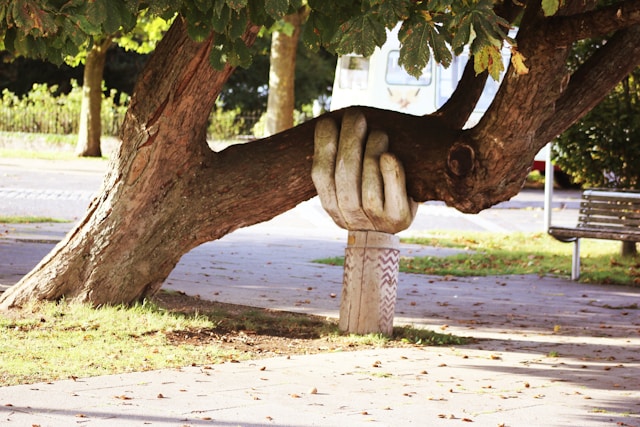
Solutions recommended for better planning the measures against heat waves
Project videos
Project documents
Presentations
Project images
Ready4Heat
The project lead partner is responsible for the content of this project website.
